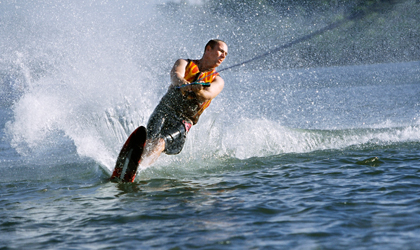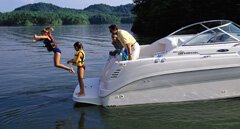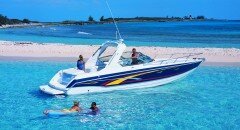Whether you’re buying your first water ski or simply upgrading your current setup, finding the perfect ski for you has never been easier. More than ever before, manufacturers are tailoring their lines to suit the skiing style and ability level of every potential skier out there. As a result, when armed with the knowledge of your particular needs, you can purchase your new ski with complete confidence and no remorse.
Pick Your Pro Shop
The first step toward retail bliss is finding a pro shop with a knowledgeable staff of skiers. Discussing your ability level and your goals with a reputable pro-shop staff will ensure you’re purchasing a ski that is properly designed and sized for your particular needs, so your skiing can progress with minimal resistance. Even better, many shops offer a limited demo program, allowing you to swap out your purchase for a different ski if you’re not completely satisfied. World-champion skier Danyelle Bennett of Bennett’s Ski and Wakeboard School (www.3eventstore.com) says its satisfaction guarantee program allows its customers to shop with ease and confidence. “We work with our customers,” she says, “and we are not done until they are on a ski they love.”
Find Your Niche
Manufacturers are no longer attempting to stuff every skier into a box based solely on their ability level. Differing skiing styles and water conditions are now as important as the skier’s experience level.
Course Skis
This style of ski is aimed at more experienced skiers who spend the majority of their time skiing the slalom course. You don’t need to ski 100 days a year to appreciate the benefits of these carbon-fiber high-performance models, but they are designed to be ridden at higher speeds, in controlled environments, and on calmer waters. Course skis feature adjustable fins that allow you to customize their performance characteristics to your particular needs, and they’ll be paired with custom-fitted bindings for maximum control.
Freeride Skis
This is a relatively new genre of ski that has replaced the traditional shaped/beginner skis. Freeride skis, while easy to get up and learn on, are focused on performance. Reactive materials and new bevel designs allow these skis to turn and hold angle with ease, catering to the widest range of ability levels. Skis in this class are designed to be ridden at slower speeds and in varied water conditions. Freeride skis will typically feature a standard or shaped fin that will perform in conjunction with the design of the ski.
Youth Skis
This class of ski encompasses both course and freeride designs, and youth skis will feature many of the construction materials and design ideals of their more mature predecessors. Not simply shorter, today’s youth skis sport softer flex patterns that let your young, lightweight skier turn the ski as its shape was designed. Manufacturers are also focusing on expanding their high- and mid-performance boot lines into youth-specific sizing.
Combo Skis
Let’s make learning to water ski easier than ever before: This seems to be an industrywide mantra in recent years, and this goal is clearly illustrated in entry-level combo skis. This is the easiest category in which to select your skis, because nearly every manufacturer makes a quality set of skis to learn on. Additionally, entry-level-shaped and anatomically correct bindings help hasten a new skier’s learning curve like never before.


